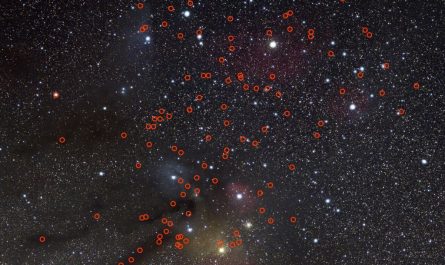The endometrium is a remarkable organ. This uterine lining is among a handful of naturally regenerating tissues in the human body, and it is one of a kind in its ability to completely regenerate without scarring.1 During each repetition of the menstrual cycle, the upper layer of the endometrial tissue builds up, breaks down, sheds entirely, and repairs itself. Although other tissues can heal from shedding or injury, the endometrium is the only adult organ to do so consistently and without fibrosis. However, this is not the case for patients with Asherman syndrome.2
Asherman syndrome is a rare gynecological condition characterized by intrauterine scarring and adhesions that block menstruation, contribute to infertility, and lead to pregnancy loss and complications. Although intrauterine trauma such as surgical scraping and uterine infections that disrupt the lower endometrial layer are known instigators of Asherman syndrome, the causative molecular factors remain to be identified, which hinders therapeutic prevention and treatment.2
We undertook this work in order to decode, at the single cell level, what is the situation in Asherman syndrome that provokes this fibrosis.
-Carlos Simón Vallés, University of Valencia
Carlos Simón Vallés, a clinical researcher, obstetrician, and gynecologist at the University of Valencia, investigates uterine biology and pathology. In a recent study published in Nature Communications, Simón and his research team analyzed patient cells and patient-derived endometrial organoids to decode an Asherman syndrome-specific endometrial cell niche and created a cell atlas that sheds light on the pathophysiology of this condition.3 They uncovered differences in epithelial signaling pathways, cell-to-cell communication, and gene expression profiles that reflect the profibrotic, proinflammatory, and antiangiogenic uterine environment in Asherman syndrome, offering molecular explanations for this condition’s characteristic intrauterine adhesions.
See Also “Infographic: Early Placenta Development Sets the Stage“
“Until now, we have not understood what is behind these adhesions,” said Simón. “We undertook this work in order to decode, at the single cell level, what is the situation in Asherman syndrome that provokes this fibrosis.”

The endometrium is unique in its ability to repeatedly build up, break down, shed, and repair itself without fibrosis, but this process is disrupted in Asherman syndrome.
The researchers performed single cell analyses to compare endometrial biopsies from patients and healthy individuals. They found Asherman-specific reductions in epithelial cell subtypes such as ciliated and glandular secretory cells and elevated immune cells, including lymphocytes, macrophages, dendritic cells, and NK cells. They also observed a loss of normal interactions between epithelial and stromal cells, consistent with the profibrotic nature of this syndrome.
Simón and his team then created and profiled endometrial epithelial organoids (EEO), which are 3D cell cultures that mimic tissue function and architecture in vitro. The researchers used cells from healthy and Asherman syndrome endometrial biopsies to grow EEO and compared this model system to their single cell analyses through organoid transcriptomic profiling. The transcriptome of Asherman-derived EEO differed from healthy EEO, revealing reduced ciliated and glandular secretory epithelial subtypes. Asherman syndrome EEO transcriptomes also differed significantly from healthy endometrial biopsy profiles, particularly for glandular secretory epithelial cells. These findings suggest that endometrial organoids may be a useful in vitro model for further decoding this disease.
“With this model, what we are reflecting is what happens in the epithelium, and it works for that, but we only have just a part of the picture,” said Simón. “The endometrium is not only epithelium, but also stroma, immune cells, endothelial cells.” Incorporating these additional cell types will be an important next step for these models.
See Also “The Vaginal Microbiome is Finally Getting Recognized“
“It is a pretty rare condition, one that I see not infrequently as a specialist, and a condition that really, there is a dearth of research on, so I was super excited to see this study,” said Pinar Kodaman, a reproductive endocrinologist at Yale University School of Medicine, who was not involved in this study. “Where this paper comes in, in terms of its relevance, is allowing us to get a better understanding of what’s happening at the cellular level within the endometrial cavity. She added, “This is a great in-depth study looking at the markers and molecular mechanisms that may play a role in the development of intrauterine adhesions.”
The transcriptomic differences between healthy and Asherman syndrome samples that Simón and his team identified align with the fibrotic nature of this condition and hold promise for supporting patients. “[These results are] not unexpected, but very interesting and potentially useful from a therapeutic perspective for future treatment of this condition,” said Kodaman. “And not just treatment, but I think probably the biggest area for intervention, frankly, would be prevention.”
References
- Critchley HOD, et al. Physiology of the endometrium and regulation of menstruation. Physiol Rev. 2020;100(3):1149-79.
- Cousins FL, et al. Endometrial stem/progenitor cells-their role in endometrial repair and regeneration. Front Reprod Health. 2021;3:811537.
- Santamaria X, et al. Decoding the endometrial niche of Asherman’s Syndrome at single-cell resolution. Nat Commun. 2023;14(1):5890.

